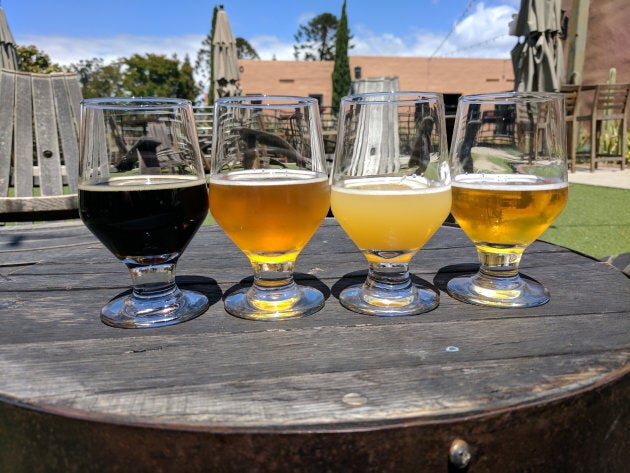For millennia, beer has been made using variations of a simple recipe. Take malts of grains, boil them in water, let the mixture known as wort cool down and add yeast. After a few days, the mixture provides a tasty and refreshing drink.
Then, in 822 CE, a French monk known as Abbot Adalhard made an amendment that would change the beverage forever. Into the mix he added the flowers of a plant, officially known as Humulus lupus, but more commonly known as hops. The result was a tastier concoction that gained approval across Europe.
Today, hops are an integral part of any beer making process. The different strains of the species can offer a variety of flavours ranging from soft and fruity, to tangy and bitter. From large corporations to the home brewer, the addition of hops has become a necessity to provide a unique and satisfying beverage.

Unfortunately, this reliance on hops has led to a sustainability problem. Action plans have been put in place to keep up with the growing number of orders. This has led to price increases, as well as the growing risk of losing the quality of the flowers.
For an international team of researchers, this looming concern needed to be addressed. They decided to find a way to maintain the hoppy nature of beer without having to rely on a consistent supply of flowers. They recently published an answer that possibly could lead to another revolution in the way beer is made. In short, they found a way to make a hoppy beer without the hops.
The secret to their study lies in the nature of the hops. Despite the incredible variety of flavours hops provide, the main chemical contributors are relatively similar. The majority of aromas and tastes come from a group of molecules known as monoterpenes. The are plentiful in the plant, and when added to the wort, can be broken down by the yeast to provide that recognizable flavour.
Each hop type has its own assortment of monoterpenes. Yet as the researchers in this study discovered, two of these chemicals appear to be common to all varietals. They are known as linalool and geraniol and are found in almost every type of American beer.

With this information in hand, the team attempted to find out if they could find a way to get the other living component of beer making, yeast, to produce these two chemicals. These microbes have been known for some time to have the ability to make monoterpenes. It was just a matter of finding out whether the yeast could make the two molecules of interest.
At first, the answer was no, as the yeasts didn't have the ability to make the chemicals. But this didn't stop the team. Instead, they found the right machinery in plants and added this ability to the yeast. The process required some tweaking, but eventually, the microbes gained the ability to make the chemicals.
Although getting to this point was difficult, the next step was a real challenge. They team needed to find a way to ensure monoterpene production would be maintained with every generation. This required putting the blueprint for the machinery, in the form of DNA, into the genome of the yeast cell.
The team eventually figured out how to accomplish this task, and came up with genetically engineered yeast that produced the monoterpenes in the same concentration as those found in the hop plants. As an added bonus, the team could ensure the same amounts of the monoterpenes were produced with each use to maintain the quality of the hoppiness in the beer.
More from Jason Tetro:
- We've Lost Another Battle In The War Against Antibiotic Resistance
- A Big City Lifestyle Could Pose Risks For Your Skin Health
- Loading Up On Bread Before A Meal May Be Bad For Your Weight
Of course, having a genetically-engineered monoterpene-producing yeast did not mean they were going to be able to make a tasty beer. They needed to test the yeast to ensure the flavour would be acceptable to a normal individual. Using the same approach as standard breweries, the group made different batches of beer in the hopes of finding one that would compare to products on the market. They were fortunate enough to find one batch made by a yeast known as JBEI-16652, hit all the right buttons. It was flavourful, sustainable, and most importantly, very drinkable.
The results of this study are impressive on their own considering the amount of effort required to make the JBEI-16652 yeast strain. Yet, for the authors, this is just the beginning. Now that they've shown how to add monoterpenes to yeast, they expect to see more studies focusing on increasing the complexity of the beer flavours using only yeast.
As for when we may see this new type of beer on the shelf, expect it to take some time. These results, while impressive, are still at the lab stage. It will take significant effort to upscale them even to microbrewery levels. Yet, eventually, you may find yourself having the choice of drinking a sustainable beer knowing you will be helping to sustain hop crops around the world.